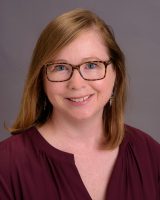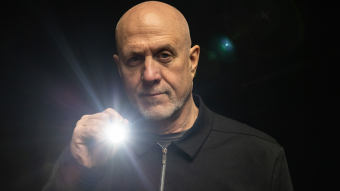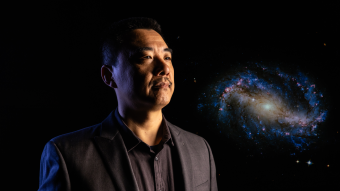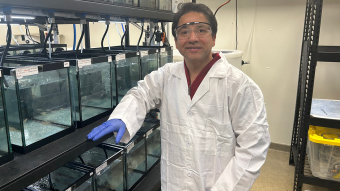Jan. 15, 2021
Contact: Brian Consiglio, 573-882-9144, consigliob@missouri.edu
When he was in middle school, teachers would give Sam Curran a list of words to type in a computer to practice his vocabulary. But Sam, who has autism, was unable to stay focused on the task and required a significant amount of one-to-one direction from a teacher to complete his work. After his mother, Alicia, persuaded his teachers to allow Sam to change the colors of the words, he was able to complete work more independently and began making remarkable progress.

Now 20 years old, Sam’s mother continues to ensure his special interests are leveraged in an effort to continue to help him grow and develop. A new survey from the MU Thompson Center for Autism and Neurodevelopmental Disorders has found that similar strategies for children with disabilities can help reduce anxiety and improve mental health.
Kerri Nowell, a pediatric clinical psychologist at the MU Thompson Center, together with colleagues Stephen Kanne, Cynthia Brown and Courtney Jorgenson, developed the survey for caregivers of youth with autism to assess various special interests they may have and determine if those special interests were interfering with the child’s development. After analyzing nearly 2,000 responses, in addition to possible reductions of anxiety and improvements of mental health, Nowell found that many caregivers also recognize the child’s special interests as outlets that can potentially benefit them in social interactions or future employment and educational opportunities.
“I think there might be misconceptions out there about people with autism,” said Nowell, who is also an assistant clinical professor in the MU School of Health Professions. “We know a lot of kids with autism get really focused on a particular thing, and while some may view a special interest as an oddity or cause for concern, the special interest can actually help reduce the child’s anxiety and be used as a positive reinforcer or educational opportunity.”

For example, Nowell suggests if a child is particularly fascinated with a specific television show, the parent or caregiver may consider using the show as a reward if the child completes a less desirable task like cleaning their room or finishing their homework. If a school assignment requires writing about a specific topic, the child can write about their special interest as a way to incorporate their passion into their schoolwork.
“Are there ways we can use this research to develop interventions where we can capitalize on their special interests and maybe modify them in a way that serves to their advantage?” Nowell said. “In middle school when students start learning about how to use the local library to conduct research, perhaps we can use that as an opportunity to incorporate their special interest in a way that supports their development and helps them become engaged members of society.”
Sam’s mother, Alicia Curran, added that if parents, educators and health care providers can be creative and find a spark that motivates individuals with autism or neurodevelopmental disabilities, they may be surprised by what they can unlock.
“We as parents often make the mistake of thinking our children might not be capable of doing something,” Curran said. “What I have learned is that you have to find the hook, something that ignites their motivation, and not only will they perform better, but you will find out that there is so much more potential that can be unlocked in the population of individuals on the autism spectrum. When Sam was able to change the colors to whatever he wanted—boom. He was suddenly able to complete the task with minimal oversight.”
Since the autism spectrum is so wide, Nowell’s research is also aimed at better evaluating and diagnosing kids with autism, which can potentially lead to defining specific subsets of autism down the road as researchers learn more about how the neurodevelopmental disorder presents itself in different populations.
“My over-arching goal is to try to get a really good, in-depth understanding of what it means to have autism and all the different ways it can look,” Nowell said. “The research is geared toward better supporting those with autism so they can be as successful as possible as they get older.”
“Characterization of Special Interests in Autism Spectrum Disorder: A Brief Review and Pilot Study Using the Special Interests Survey” was recently published in the Journal of Autism and Developmental Disorders.



